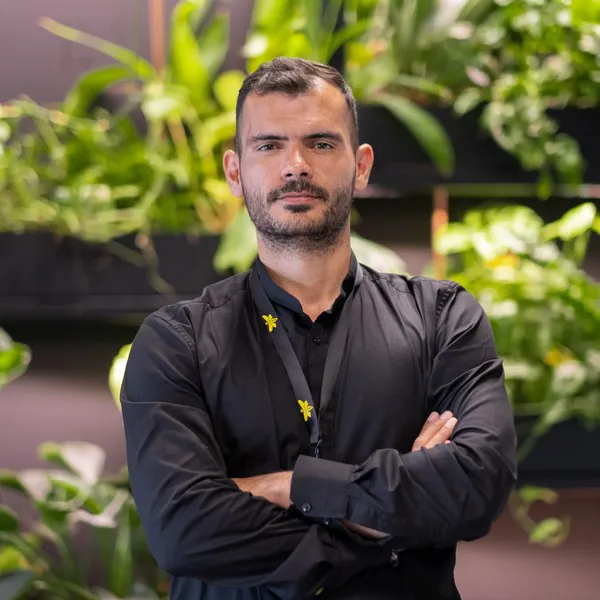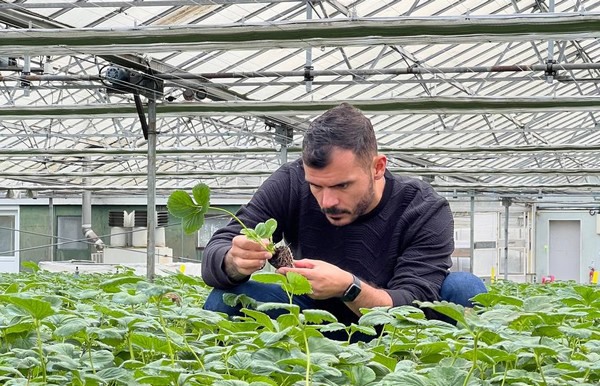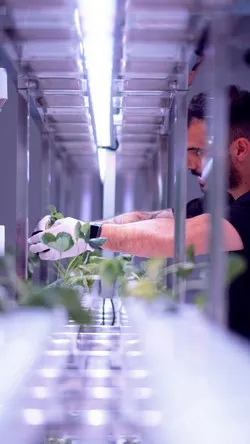There are many opportunities in the strawberry space in the UK. This is mainly because, historically, the country has mainly relied on imports during the out-of-season period, while it could count on local production during the summer months only. With advancements in CEA strawberry cultivation, many growers seized the momentum. For instance, Amsterdam-based agtech enterprise SMARTKAS has built one of the UK’s largest and highest-yielding vertical strawberry farms just outside of London in Harlow, Essex. “SMARTKAS specializes in providing food security as a service globally,” says Andreas Lypas, operations manager at the company. “We are focused on running facilities around the world. We design, build, own, and operate many types of smart farms. That could be fully automated vertical smart farms or smart greenhouses. It depends on the individual needs of the country in which we operate.” SMARTKAS indeed has operations also in the Netherlands, Hungary, Brazil, and Romania.

The location of the farm in the UK aligns with the company’s mission. “Our urban setting was specifically selected because it allows us to serve our market and cut down on transportation costs and carbon footprint,” Andreas explains. For this same reason, the strawberries grown at SMARTKAS are solely meant for the local market.
The importance of the roots zone
To achieve the strawberry quality Andreas strives for, nothing is left to chance during cultivation. “We control the environment entirely,” he points out. “We call it data-oriented cultivation. We have a dedicated team working with robotics and AI to collect data to create the perfect growing environment for our plants. In this way, we can steer the plants according to the climate, nutrient uptake, and so on. For instance, we do sap analysis, water analysis – we are very precise in how we grow our plants.”
In other words, they pay attention to the smallest details when it comes to the plants’ needs – especially in terms of roots zone. “We have deployed many sensors all over the cultivation, even in the roots zone. So we get readings on water absorption, the oxygen level, and so on,” he explains. “When growing in hydroponics, a grower must know how to steer the plants. And to do that, I need to know that the root development and uptake are optimal. Thanks to the sensor readings, we make sure that the right amount of water and nutrients are absorbed by the roots.”

A crucial aspect of the root zone is the temperature. “The baseline for that would be around 18.5 and 20 degrees Celsius. Within this range, the plant is most vigorous as the roots are in the proper environment. If you get above 20 degrees Celsius, you can have problems with fungi and mold such as pythium,” Andreas remarks. He also takes care to add that the temperature needs to stay constant throughout cultivation. “It needs to stay consistent. It can go half a degree up or down, but not more than that.”

Precision
At the same time, it’s not all about the roots zone temperature, as the dynamics at play there are more complex. “If you are looking at the roots zone, you don’t pay attention to the temperature only, but also the dissolved oxygen, for instance. That’s why we have a sensor for that too, which tells us what the percentage of dissolved oxygen is in the liquid solution, and if we need to introduce more. It’s a combination of different data and measurements. It’s not only about one element.”
With precision as the headlight of SMARTKAS, Andreas remarks that while challenging, they are coping well with the energy crisis. “We rely on renewable energy sources as much as possible. In a country where there is an abundance of wind, we’ll use wind. In the UK, we use solar. Another key thing for us is that we have the AI and data-oriented cultivation,” he says. “We spend on energy only when we really need it. We are careful where and how we use it. For instance, we have a light threshold, which follows our light recipes to let our plants express their full genetic potential.
The outcome of the cultivation strategy is the result of the joint effort of the cultivation team and agronomist team working together with data scientists. “We know the needs of the plants,” he remarks. “And we validate those with our sensors. There are many things to take into account when it comes to this kind of CEA cultivation, but we have the expertise and the technology to keep everything under control.”
The old saying goes that you don’t change a winning team, and SMARTKAS holds true to that. “We have ambitious plans,” Andreas says. “And, of course, these plans also include different crops other than strawberries. For instance, we already have a lettuce farm in Amsterdam, and new projects are also in the works. As an operation manager, I have to make sure that all the processes in the farm are spot on and that the yields and quality we are getting are a demonstration of our attention to detail. Apart from that, we’ll see what the future will hold.”
For more information:
SMARTKAS
smartkas.com
